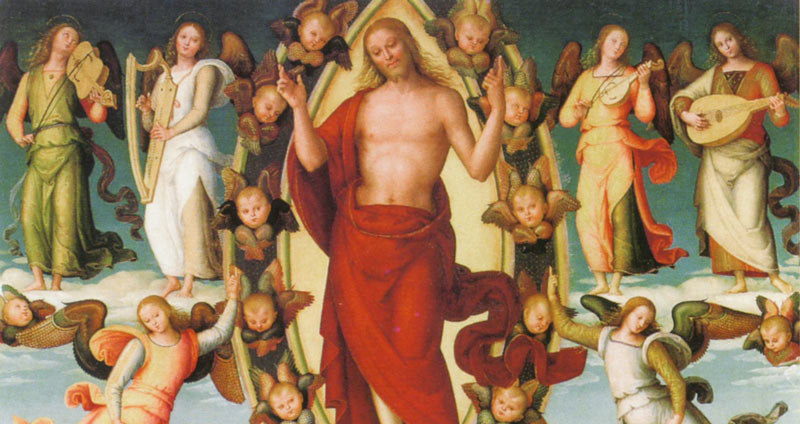
The Scripture readings used from the ascension onward reveal a few contradictions. These purposeful discrepancies are the cornerstone of the Liturgy’s calendar.
Luke’s Gospel says that the ascension took place Easter Sunday evening. Luke also penned the Acts of the Apostles, which indicates that the ascension took place 40 days after the resurrection.
These kinds of inconsistencies are fodder for skeptics convinced that the Gospels perpetuate a fraud on the unwashed masses. In reality, Acts was meant to elaborate on the events of the Gospel, like the second description of mankind’s creation in Genesis was meant to detail the first.
Luke records that there was an extended period of resurrection appearances. The Lord “disappeared” several times after appearing from heavenly glory.
Luke knew as well as the others that there was more than one divine mystery unfolding simultaneously. The subsequent Church benefited from Luke’s method, even though the events occurred more as a continuous movement than a series of disconnected moments.
Our liturgical year is based on Luke. We highlight, but do not isolate various moments like the Nativity, crucifixion, resurrection, ascension, and Pentecost to celebrate those events over a year’s duration even though we know in fact that they are really one Godly movement.
This enables meditation on single aspects and glean from them deeper insight into the entire meaning of salvation in Christ. As a result, the Church celebrates a feast of the Holy Trinity after each Easter season to serve as a capstone of the cornerstone Jesus, rejected by builders, but whose divinity has gradually been revealed over the first half of the liturgical year.
Trinity Sunday celebrates how the Father, whose promise of redemption begun in Advent, reached fulfillment with the Incarnation of the Son at Christmas. The Son conquered sin throughout Lent and redeemed creation at Easter.
On Easter night the risen Lord bestowed the Holy Spirit on the Apostles to help them overcome their propensity to fear. At Pentecost, the Spirit’s seven-fold power of overcoming raw human instinct was given to the whole Church.
In the first half of the Liturgical year each Person of the one God — Father, Son, and Holy Spirit — has slowly been revealed as a pivotal protagonist of salvation. Trinity Sunday celebrates these multifaceted Persons in one grand celebration.
The subsequent half of liturgical time will be an unfolding of these core events. Corpus Christi recalls how the institution of the Eucharist was, in part, Jesus defeating the instinct of self-preservation in the name of love. The Sacred Heart is a reflection on how the Good Shepherd’s love for mankind is self-sacrificial, not self-affirmation.
The Church’s worship broadcasts this message to a world obsessed with the blind affirmation that has begotten genderless lavatories. Encounter with the Trinitarian God transformed the likes of the denying Simon and murderous Saul into Sts. Peter and Paul.
A weekly rendezvous with transformed bread and wine is an encounter with our destiny. Let the message of love go forth like the timid Apostles did.
Image: The Ascension; Pietro Perugino, 1505
